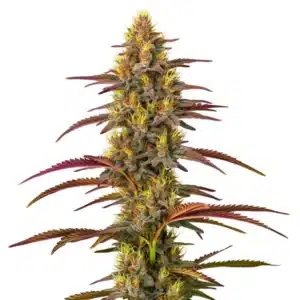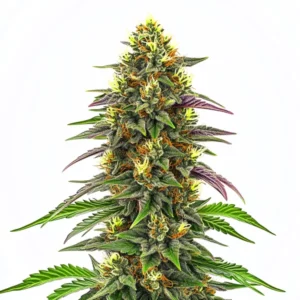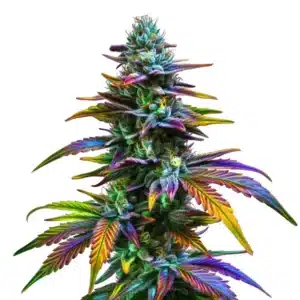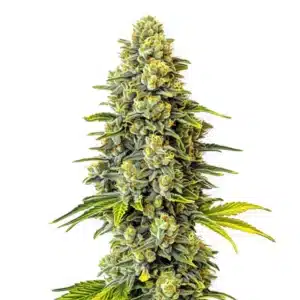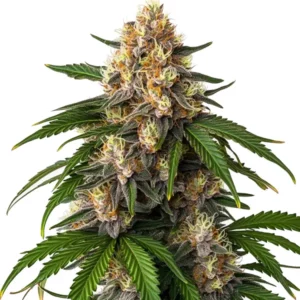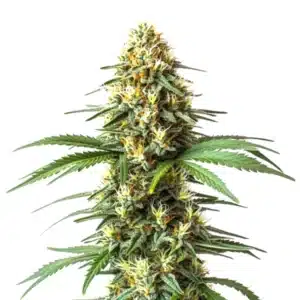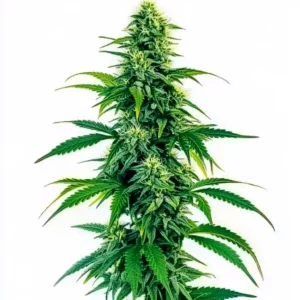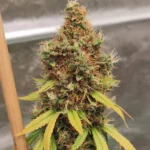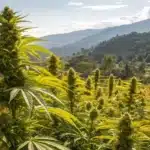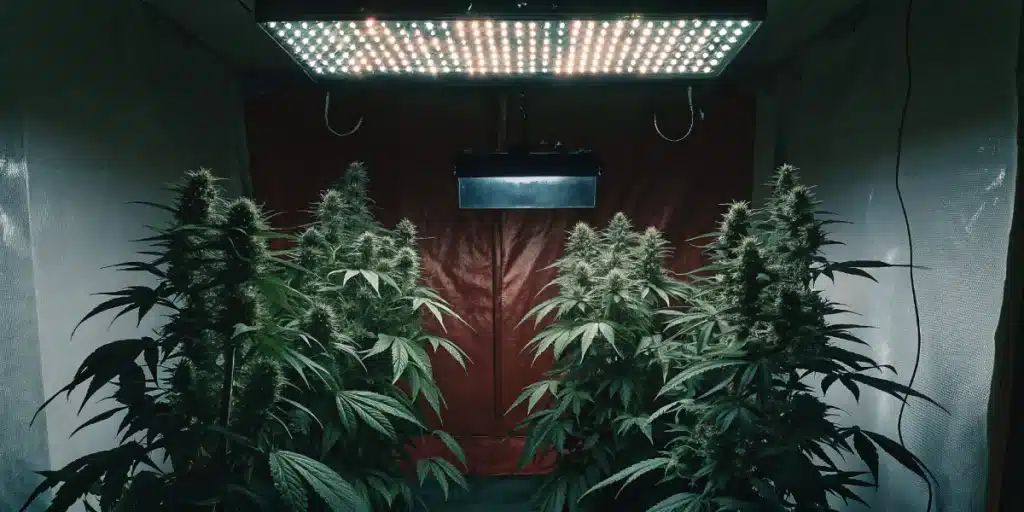
How to Grow Panama Weed Strain
Panama Weed Strain Description
Panama Weed Strain is a predominantly Sativa variety known for its heritage from Panama and Colombia. Revered by cultivators and users alike, this strain offers a unique combination of uplifting effects and a ri
The Panama Strain stands out as a legendary cultivar with deep roots in Panama and Colombia, celebrated for its predominantly Sativa effects that blend relaxation with a bright, happy buzz. This strain has captivated the interest of both recreational users and medical patients due to its rich heritage and versatile benefits. Its THC levels, which range between 11% and 15%, provide an experience that balances potency and functionality. Unlike some high-THC strains that may cause overwhelming effects, Panama Weed Strain offers a more manageable and controlled high, making it accessible to a wide variety of users.
Recommended Strains
“Panama weed” typically points to Panama Red, a legendary strain of Cannabis sativa famous for its strength and distinctive reddish buds. This classic variety gained popularity during the 1960s and 70s, celebrated for its smooth, uplifting cerebral buzz, euphoric effects, and boost of energy.
The visual appeal of Panama Weed is another of its defining traits. Its buds are dense and generously coated with resinous trichomes, which not only contribute to its potency but also enhance its visual allure. Under proper lighting, these buds glisten with a frosty sheen, and the vibrant green hues are often accentuated by orange pistils. The strain’s complex aroma is dominated by earthy, hashish undertones, accompanied by hints of fresh lemon and a subtle spicy kick. These sensory attributes make it a favorite for connoisseurs seeking a full-bodied experience.
Terpene content plays a significant role in shaping the Panama Strain’s effects and flavors. Key terpenes like Alpha-Humulene, Alpha-Pinene, and Limonene interact synergistically to produce calming and uplifting sensations. This balance of physical relaxation and mental stimulation has positioned Panama Weed Seeds as a go-to option for those looking to unwind without compromising focus or creativity. Its therapeutic applications extend to managing pain, reducing insomnia, and alleviating arthritis symptoms, enhancing its reputation as a multi-purpose strain.
Promos & Deals
Environmental Requirements for Growing Panama Weed Strain
Panama Weed Strain thrives in warm, tropical climates, reflecting its origins. Consistent daytime temperatures of 75-85°F (24-29°C) and nighttime temperatures that do not dip below 60°F (15°C) are ideal. Proper temperature control is crucial for both indoor and outdoor cultivation to prevent stress on the plants.
Maintaining a stable humidity level between 50% and 70% during the vegetative stage helps the plants develop strong foliage. As flowering begins, reduce humidity to 40% to 50% to prevent mold or bud rot. Panama Weed Seeds can grow tall and requires ample space, so growers should account for vertical growth when planning their setup.
Setting Up the Growing Cannabis Space
Indoor Cannabis Cultivation
For indoor setups, a spacious grow tent with a height of at least six feet is recommended to accommodate Panama Weed Strain’s tall structure. Use high-intensity LED grow lights with a full spectrum to promote healthy development. During the vegetative stage, maintain an 18-hour light cycle, reducing to 12 hours to trigger flowering.
Install an efficient ventilation system with carbon filters to manage airflow and odors. Reflective materials like Mylar sheets maximize light distribution. Use a well-aerated soil rich in organic nutrients or opt for a hydroponic system for precise nutrient control. Ensure regular pH monitoring, keeping levels between 6.0 and 6.5.
Outdoor Cannabis Cultivation
Panama Weed Strain flourishes in outdoor environments with abundant sunlight. Plant in well-draining, nutrient-rich soil, and position the plants in a wind-sheltered area. Use large containers or raised beds to support robust root development. Staking or trellising is essential to support the tall, sativa-dominant plants and prevent damage from strong winds or heavy buds.
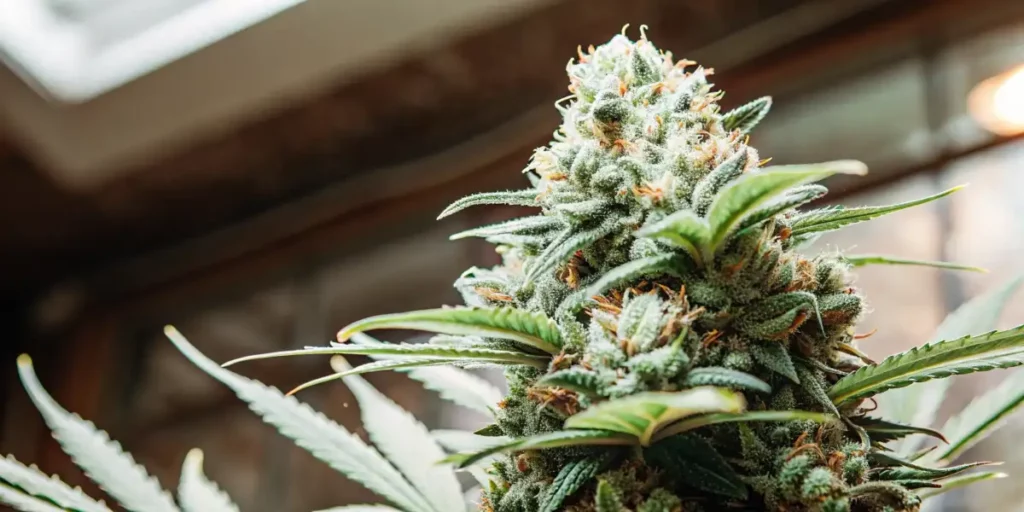
Propagation and Germination of Panama Weed Strain
High-quality feminized seeds are key to a successful grow. Begin by soaking seeds in water for 24 to 48 hours. Transfer the seeds to a damp paper towel and cover them with a second moist towel, placing them in a dark, warm environment for another 24-48 hours until taproots emerge. Once germinated, move the seeds to a light, well-draining soil mix and maintain a warm environment (75-80°F) with 60% to 70% humidity. Indirect lighting supports early seedling growth before transitioning to stronger light as the plants mature.
Providing consistent moisture without overwatering is vital during this stage. Ensure that the growing medium is evenly moist but not saturated. After the seedlings develop their first true leaves, gradually increase light intensity to encourage healthy development. Regular observation is crucial to catch any early signs of stress or fungal growth.
Vegetative Phase of Panama Weed Seeds
During the vegetative stage, provide a light cycle of 18 to 20 hours. The plants benefit from high nitrogen nutrients, which promote vigorous foliage and stem development. This phase typically lasts between 6 to 10 weeks, depending on environmental conditions and desired plant size. During this time, focus on providing consistent watering schedules, allowing the soil to dry slightly between waterings to prevent root rot.
Implement training techniques such as topping, low-stress training (LST), and defoliation to encourage even light distribution across the plant canopy. This not only maximizes the plant’s potential but also improves airflow, reducing the risk of pests and diseases. Additionally, regularly monitor the pH and nutrient levels to maintain optimal conditions for growth.
Flowering Phase of Panama Weed Strain
Panama Kush enters the flowering phase after about eight to ten weeks of vegetative growth. Shift to a 12-hour light cycle and reduce nitrogen-rich feeds while introducing phosphorus- and potassium-dominant nutrients to support bud development. It is essential to maintain stable temperatures of 65-75°F and lower humidity levels (around 40% to 50%) to prevent mold growth on the dense flowers.
The flowering phase typically lasts 10 to 12 weeks. During this period, monitor the development of trichomes. They will transition from clear to cloudy, and some will begin turning amber. This is the key indicator for determining the optimal harvest time, depending on the desired cannabinoid balance. Ensure that plants have adequate structural support as the buds can become heavy and cause branches to bend or snap.
Cannabis Fertilization and Nutrition
A balanced nutrient regimen tailored to each growth stage is vital. During the early stages, nitrogen supports foliage development. As the plant transitions to flowering, phosphorus and potassium become essential for robust bud formation. Additionally, micronutrients such as calcium, magnesium, and sulfur play a critical role in preventing deficiencies that can hinder plant health.
Incorporate supplements like beneficial microbes, mycorrhizae, and enzymes to enhance nutrient uptake and improve soil health. Regularly adjust nutrient concentrations based on the plant’s needs, using visual cues such as leaf color and growth rate to guide your decisions. Avoid overfeeding, as nutrient toxicity can cause leaf burn and reduce yields. Flushing with pure water in the final weeks before harvest can help improve the taste and aroma of the cured buds.
Pest and Disease Control for Cannabis Growing
Though resilient, Panama Weed Strain is still vulnerable to common pests like spider mites, aphids, and whiteflies. Early detection is essential to minimize damage. Conduct regular inspections, particularly on the undersides of leaves where pests often hide. Integrated pest management (IPM) strategies, such as the use of predatory insects (e.g., ladybugs or parasitic wasps), can provide natural control without harmful chemicals.
Maintaining proper environmental conditions can reduce the risk of both pests and diseases. Adequate airflow prevents humidity buildup, which can lead to fungal infections like powdery mildew or botrytis. Organic fungicides and neem oil can be effective for treating early-stage infections. Additionally, keeping the grow area clean and free of debris minimizes the chances of pest infestations.
Harvesting and Curing for Cannabis Growing
Trichome inspection is crucial to determine the right harvest time. Use a magnifying tool to monitor trichome development. When trichomes appear milky with some amber, it indicates peak cannabinoid content and readiness for harvest. Use sterilized tools to cut branches, minimizing damage to the plants.
After harvesting, hang the branches upside down in a dark, well-ventilated area with stable temperatures of 60°F to 70°F and humidity around 50-60%. This drying process can take 7 to 14 days, depending on environmental conditions. Once the outer surface of the buds feels dry, carefully trim off excess leaves and transfer the buds to airtight glass jars for curing.
Curing enhances the terpene profile and overall potency of the cannabis. Store jars in a cool, dark place, opening them daily for the first week to release moisture. Gradually reduce the frequency of burping over the next few weeks. Properly cured cannabis retains its flavor and potency for several months, offering a superior experience to end users.
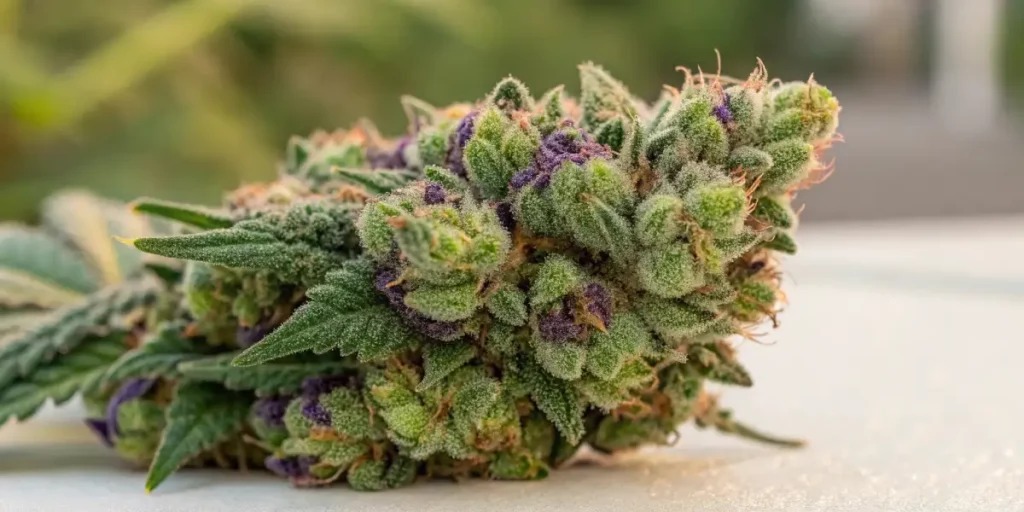
Is Panama Weed Strain Indica or Sativa?
Panama Weed Strain is predominantly Sativa, characterized by its uplifting effects and tall growth structure. While it delivers a calming body relaxation, it also stimulates the mind, fostering creativity and sociability. This balanced effect profile appeals to a wide range of cannabis users.
Advantages of Growing Panama Weed Seeds
- High resilience to environmental changes, making it adaptable to different growing conditions.
- Unique flavor profile with spicy, lemon, and hashish notes, which appeals to connoisseurs.
- Versatile effects suitable for both recreational and medicinal users.
- Robust growth potential, especially in outdoor environments with ample space.
- Resistance to common environmental stressors such as heat and humidity variations.
Common Mistakes When Growing Panama Weed Strain
Growing Panama Weed Strain can be a rewarding experience, but common mistakes may hinder its development and yield potential. One frequent issue is overwatering, which can lead to root rot and hinder nutrient uptake. It is essential to allow the top inch of soil to dry out between watering sessions to prevent waterlogging.
Another common mistake is inconsistent lighting. Sativa strains like Panama Weed require high-intensity light during the vegetative stage and a strict 12-hour light/dark cycle during flowering. Failure to maintain proper light cycles can result in delayed or incomplete flowering. Additionally, nutrient imbalances can cause deficiencies or toxicities, manifesting in symptoms such as discolored leaves or stunted growth. Regularly testing pH and nutrient levels helps prevent these issues.
Poor airflow and high humidity are also problematic, particularly during the flowering stage. Without adequate ventilation, plants are at risk of developing mold or mildew. Implementing fans and dehumidifiers helps maintain a healthy growing environment. By avoiding these common pitfalls, growers can ensure robust plant health and maximize their harvest.
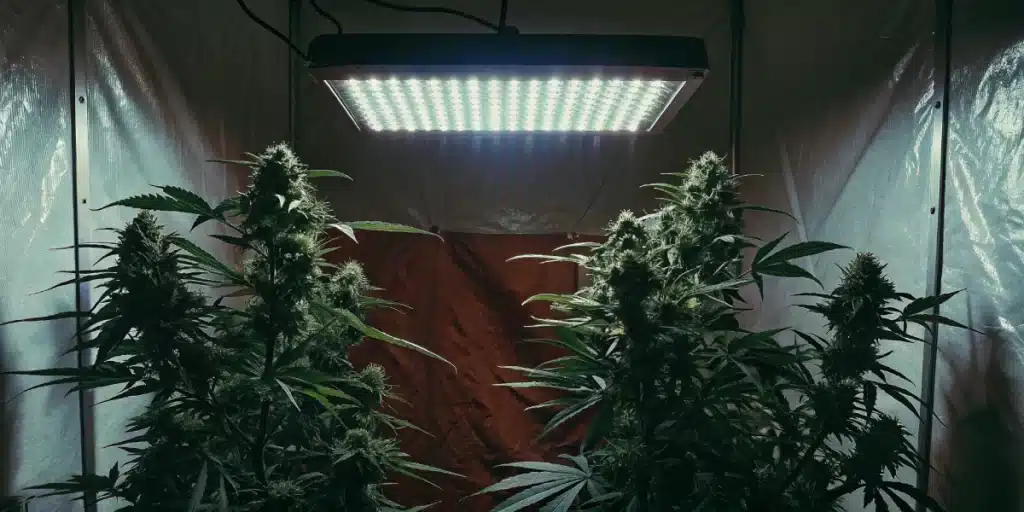
Similar Strains
- Colombian Gold: A legendary landrace Sativa strain that shares a close genetic history with Panama Weed Strain. Known for its vibrant cerebral effects, Colombian Gold provides users with an energetic and focused high. The flavors are a complex blend of sweet lemon, pine, and earthy undertones, making it a favorite among those seeking long-lasting motivation and creative inspiration. Its resilience in outdoor settings and ability to produce high yields make it a staple for Sativa enthusiasts.
- Acapulco Gold: Often regarded as one of the most iconic strains in cannabis history, Acapulco Gold offers a euphoric, uplifting experience with a unique flavor profile. Its buds are dense, with golden hues and a distinct aroma of toffee and tropical fruit. Acapulco Gold thrives in warm, outdoor climates, much like Panama Weed Seeds, and is highly sought after for its balanced combination of mental clarity and physical relaxation. Its flowering period typically ranges from 10 to 12 weeks, making it a suitable companion strain in Sativa-dominant gardens.
- Maui Wowie: Originating from the Hawaiian Islands, Maui Wowie is a tropical Sativa known for its uplifting, euphoric effects. It has a reputation for delivering bursts of energy and creativity, making it ideal for daytime use. The strain features a sweet pineapple and citrus aroma, with underlying hints of earthiness. Maui Wowie’s adaptability to both indoor and outdoor environments has made it popular among growers who want a reliable, fast-growing Sativa with potent effects.
FAQs
What is the THC content of Panama Weed Strain?
The THC content of Panama Weed Strain ranges from 11% to 15%. This moderate level of THC provides a balanced experience, allowing users to enjoy both relaxation and mental stimulation without the risk of overwhelming psychoactive effects. The strain’s THC potency makes it accessible for users who are new to cannabis as well as those seeking a strain suitable for both recreational and medicinal purposes.
How long does it take to flower?
Panama Weed Strain has a flowering period of approximately 10 to 12 weeks. The specific duration may vary depending on factors such as growing conditions, nutrient availability, and phenotype. Indoor growers can control environmental factors more precisely to stay within this timeframe, while outdoor cultivators should ensure that their plants receive consistent sunlight and protection from harsh weather to achieve optimal flowering results.
What flavors can I expect from Panama Weed Strain?
The flavor profile of Panama Weed Strain is rich and multi-dimensional. Users often report tasting earthy hashish, complemented by fresh lemon and subtle spicy notes. These flavors are enhanced by the strain’s terpene composition, which includes Alpha-Humulene, Limonene, and Alpha-Pinene. The combination of flavors creates a smooth and satisfying smoking or vaping experience that appeals to both flavor connoisseurs and casual consumers.
Is Panama Weed Strain beginner-friendly?
Yes, Panama Weed Strain is considered suitable for beginners due to its manageable growth requirements and resilience against common cultivation issues. It thrives in both indoor and outdoor environments, provided that growers maintain optimal temperature, humidity, and light conditions. Additionally, its moderate THC content makes it an approachable option for novice users who want to experience the effects of cannabis without excessive intensity. Regular monitoring and basic care are usually sufficient to achieve healthy growth and successful harvests.
What medical benefits does Panama Weed Strain offer?
Panama Weed Strain is known for its versatile medical applications. It is commonly used to alleviate symptoms of arthritis, including inflammation and chronic pain. Its calming properties make it effective in reducing insomnia by promoting restful sleep. Additionally, the strain’s uplifting effects can help combat mood disorders such as anxiety and depression. Medical users often appreciate the balanced effects of Panama Weed Strain, which provide physical relaxation without compromising mental clarity or productivity.


